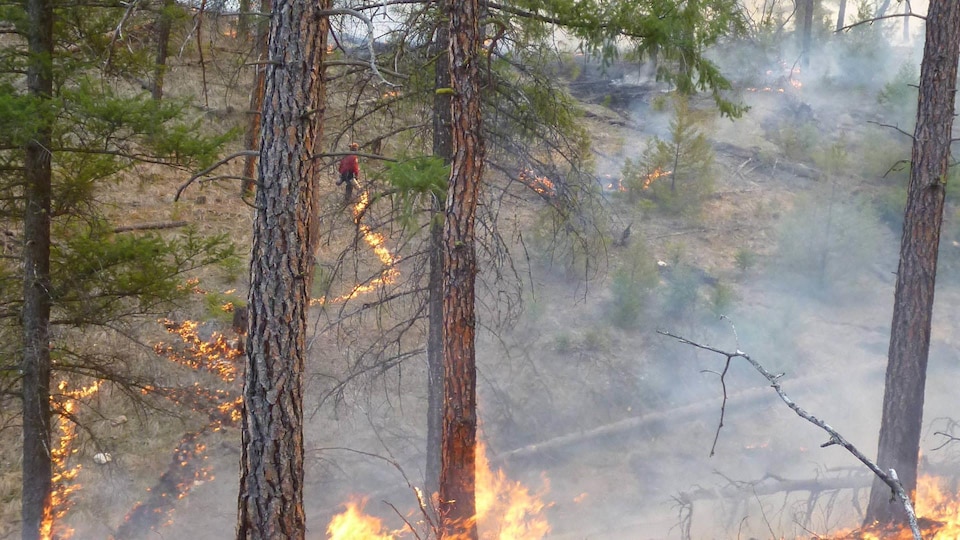Indigenous communities have the knowledge to reduce wildfire risk in their communities, but they are not able to implement it
says Amy Cardinal Christianson, lead author of the study and researcher at the Canadian Forest Service (CFS).
However, solutions exist, according to a recent study published in the scientific journal Facets.
Overcome preconceived ideas
Fires are often associated with negative images, such as out of control flames, intense clouds of smoke and evacuations. Cultural burns are quite the opposite, according to Métis researcher Amy Cardinal Christianson.
Cultural fires are lower in intensity than controlled burns carried out by fire departments, but offer similar environmental benefits. They make it possible to reduce plant fuels on the ground, which can reduce the risk of large forest fires
says the scientist.
The cultural fires are led by experts who have a very intimate knowledge of the territory.
” Cultural burning is usually a family or community event and is only practiced at certain times and in certain regions. »
Amy Cardinale Christianson argues that the diversity within cultural practices in Canada is such that these nations require some flexibility from governmental institutions: What we really need to do is support and fund the nations and what they want to do on the ground.
Take back control
The study reveals that Aboriginal communities are 30% more likely to be evacuated and suffer the consequences of forest fires than the rest of the Canadian population. They are still not allowed to participate in decision-making regarding the management of forest fires
laments, however, Amy Cardinal Christianson.
It is provincial government agencies that can decide who has the right to initiate controlled burns, according to the researcher.
In British Columbia, it is possible for First Nations to direct their own burning
says Tony Pesklevits, manager of the provincial commitment to develop cultural fires in British Columbia at the fire department BC Wildfire.
We work with them to develop a plan to carry out this burning and often to determine if our support or assistance is needed.
he adds.
Regaining control of this cultural practice can create legal liability issues for communities should they lose control of the fire. In California, a new law passed in 2021 adds legal protections for those who conduct burns in the public interest.
A pride to share
There is still a long way to go to have this ancestral knowledge recognized, admits deputy director general Tony Pesklevits, but the government of British Columbia says it is committed to working with indigenous peoples to use their knowledge for better management of lights.
One of the issues raised by the study is the lack of funding for training in the safe practice of traditional Aboriginal fires. However, this teaching also makes it possible to learn about the health of ecosystems.
The revitalization of this knowledge is also beneficial for the mental health of communities, whose knowledge has long been denigrated by the authorities. It really helps people to have confidence in themselves and to be proud of their nation and their elders
concludes the researcher.
Reference-ici.radio-canada.ca
